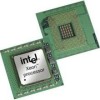Intel BX80605X3430 Data Sheet - Page 52
Memory Reference and Compensation, Reset and Miscellaneous Signals
 |
UPC - 735858210331
View all Intel BX80605X3430 manuals
Add to My Manuals
Save this manual to your list of manuals |
Page 52 highlights
Signal Description 6.2 Memory Reference and Compensation Table 6-4. Memory Reference and Compensation Signal Name SA_DIMM_VREFDQ SB_DIMM_VREFDQ SM_RCOMP[2:0] Description Channel A and B Output DDR3 DIMM DQ Reference Voltage. System Memory Impedance Compensation. Direction O I Type Analog Analog 6.3 Reset and Miscellaneous Signals Table 6-5. Reset and Miscellaneous Signals (Sheet 1 of 2) Signal Name CFG[17:0] COMP0 COMP1 COMP2 COMP3 FC_x PM_EXT_TS#[1:0] PM_SYNC Description Configuration signals: The CFG signals have a default value of 1 if not terminated on the board. • CFG[1:0]: PCI Express Bifurcation Intel Xeon® processor 3400 series: 11 = 1 x16 PCI Express 10 = 2 x8 PCI Express 01 = 4 x4 PCI Express (requires Intel 3420 or 3400 Chipset) 00 = Reserved • CFG[2]: Reserved configuration land. A test point may be placed on the board for this land. • CFG[3]: Reserved configuration land. • CFG[6:4]: Reserved configuration lands. A test point may be placed on the board for this land. • CFG[17:7]: Reserved configuration lands. Intel does not recommend a test point on the board for this land. Impedance compensation must be terminated on the system board using a precision resistor. Refer to Table 7-9 for the termination requirement. Impedance compensation must be terminated on the system board using a precision resistor. Refer to Table 7-9 for the termination requirement. Impedance compensation must be terminated on the system board using a precision resistor. Refer to Table 7-9 for the termination requirement. Impedance compensation must be terminated on the system board using a precision resistor. Refer to Table 7-9 for the termination requirement. Future Compatibility (FC) signals are signals that are available for compatibility with other processors. A test point may be placed on the board for these lands. External Thermal Sensor Input: If the system temperature reaches a dangerously high value, this signal can be used to trigger the start of system memory throttling. Power Management Sync: A sideband signal to communicate power management status from the platform to the processor. Direction I I I I I I I Type CMOS Analog Analog Analog Analog CMOS CMOS 52 Datasheet, Volume 1















